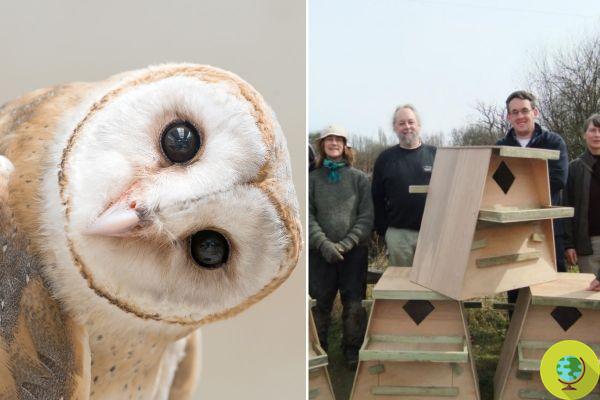
Barn owls are disappearing. Ornithologists say 2013 will forever be remembered as the worst year on record for one of England's most widespread rural birds, of which fewer than 1.000 pairs reportedly nested. In a typical year, that would have been 4.000.
He is about to end up run over, his mother saves him
Barn owls are disappearing. Ornithologists say 2013 will forever be remembered as the worst year on record for one of England's most widespread rural birds, of which fewer than 1.000 pairs reportedly nested. In a typical year, that would have been 4.000.
Blame? Experts have no doubts: it is of the last four years of extreme climatic conditions, which have led to a decline of more than three-quarters of the population of this protected species. Fears of a dwindling barn owl population have been growing in recent years. Birds were a common sight on farmland in Britain a century ago, but numbers had dropped by 70% since the early 1980s.
Over the course of this summer, it was already clear that the nocturnal bird of prey was on its way to one real "catastrophe" and now, after a year-end evaluation, the true scale of the situation has been revealed. It is worse than expected. The cold winters of 2009/2010 and 2010/2011 had a devastating effect. The rainy month of June 2012 also killed many birds in the nests. March of this year was the second coldest on record and led to an increase in the mortality rate even among adults.
“It has been a catastrophic year. The barn owl now needs all the help he can get. It will take at least two years for the population to start recovering - provided there are no more extreme weather events ", explains David Ramsden, boss of the Barn Owl Trust.
To complicate the situation, there are also the high speed rail link designed between London and the Midlands, which threatens their habitat and safety, and the widespread use of pesticides. The association explains that 91% of the birds found dead had ingested rat poison, which constitute their natural food. Basically, when rodents are poisoned, the barn owls that eat them are poisoned and die.
While not yet fully quantified, poisoning may actually be the number one threat to the species. Yet unlike all other problems, excessive use of rodenticides is easy to deal with. This is why a petition was born to ask the UK Ministry of the Environment to introduce one proper regulation on rodent poisons as a matter of urgency.
To sign the petition click here
Roberta Ragni
ALSO READ:
Climate change: Global warming affects bird migration


























